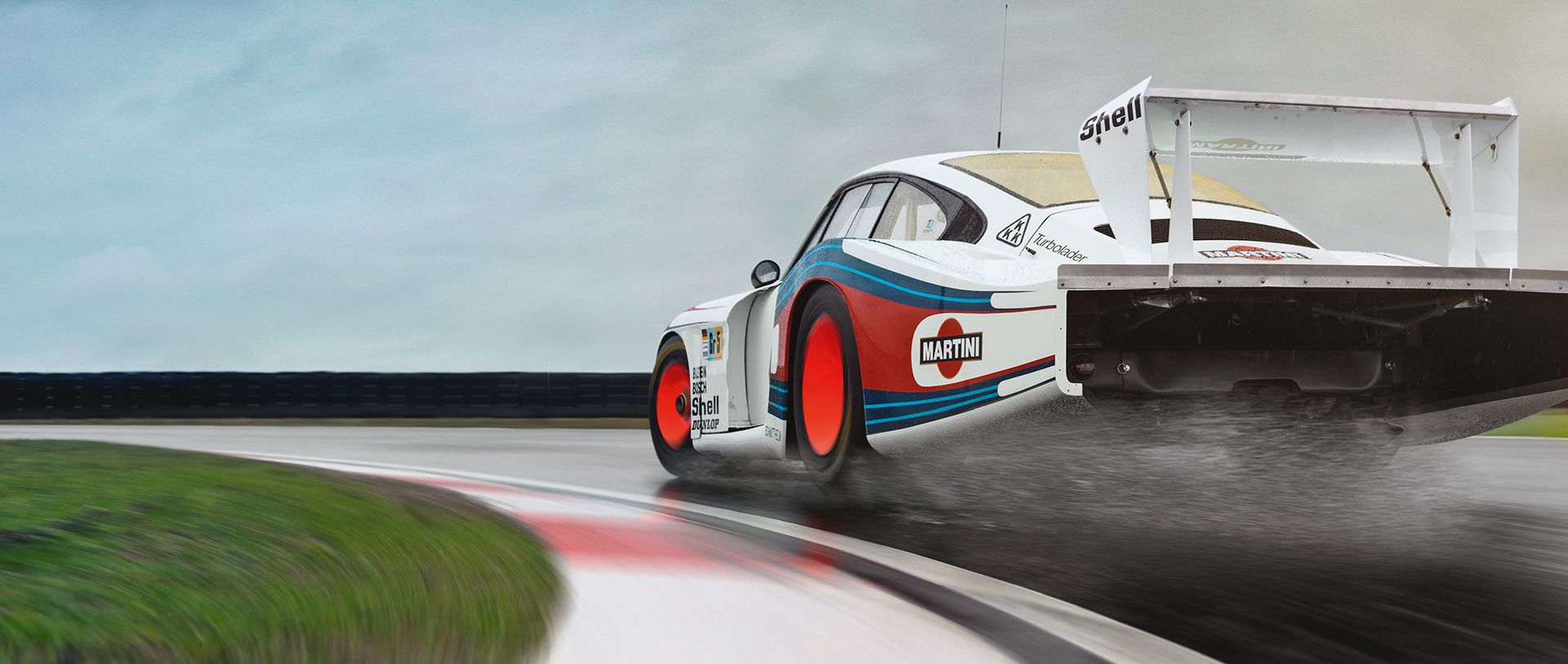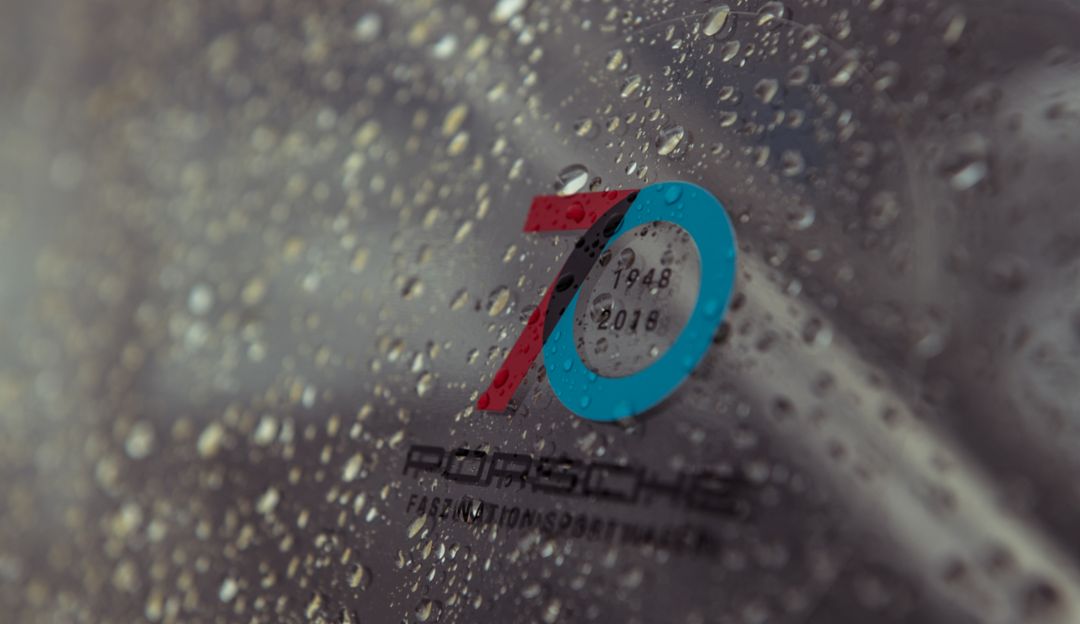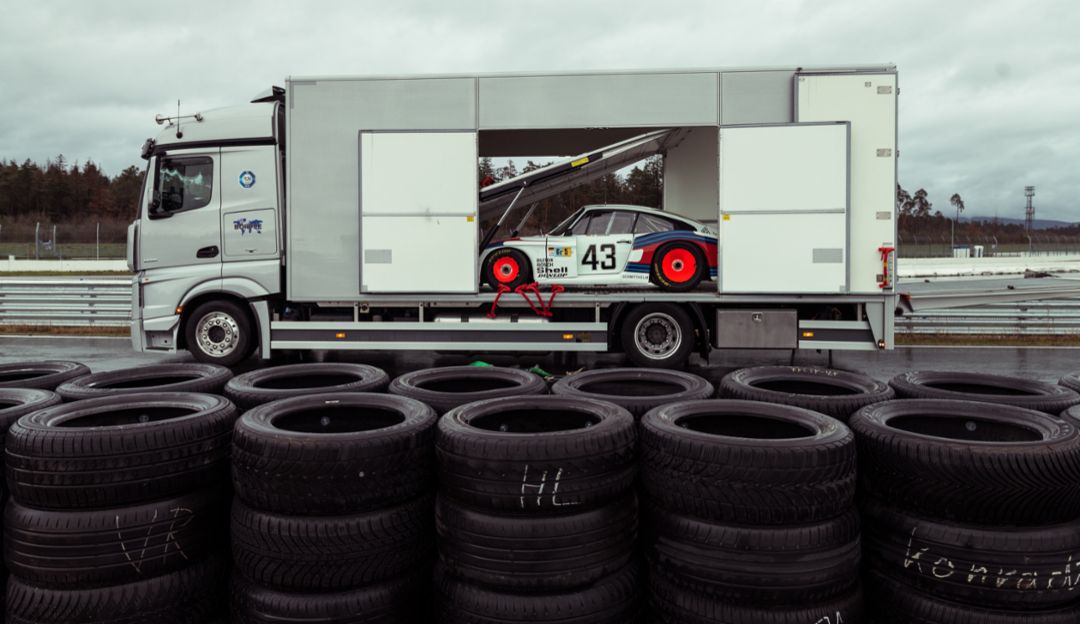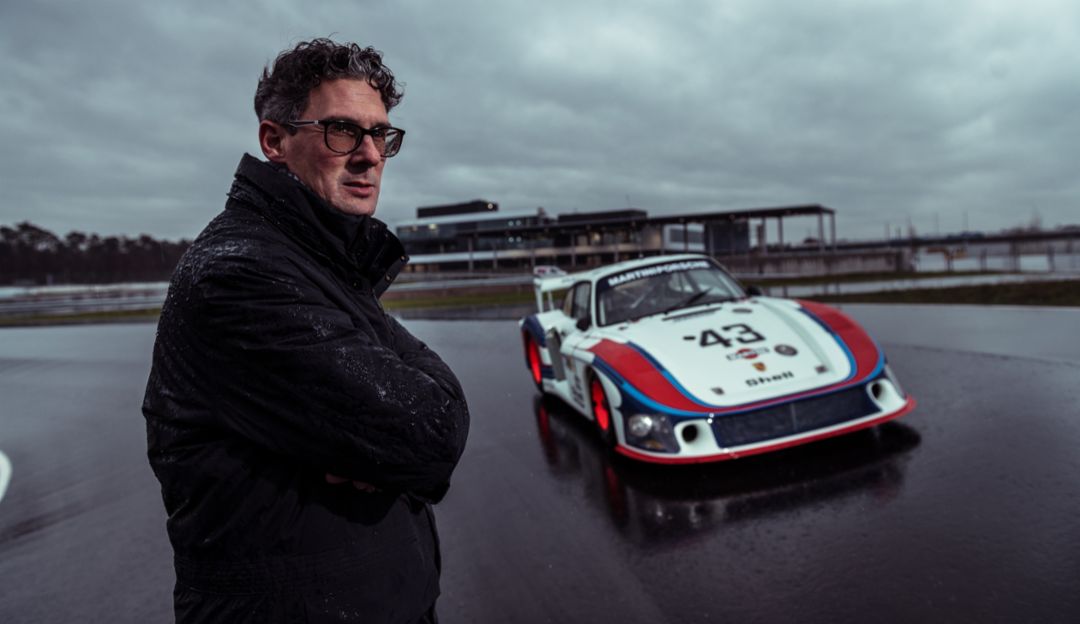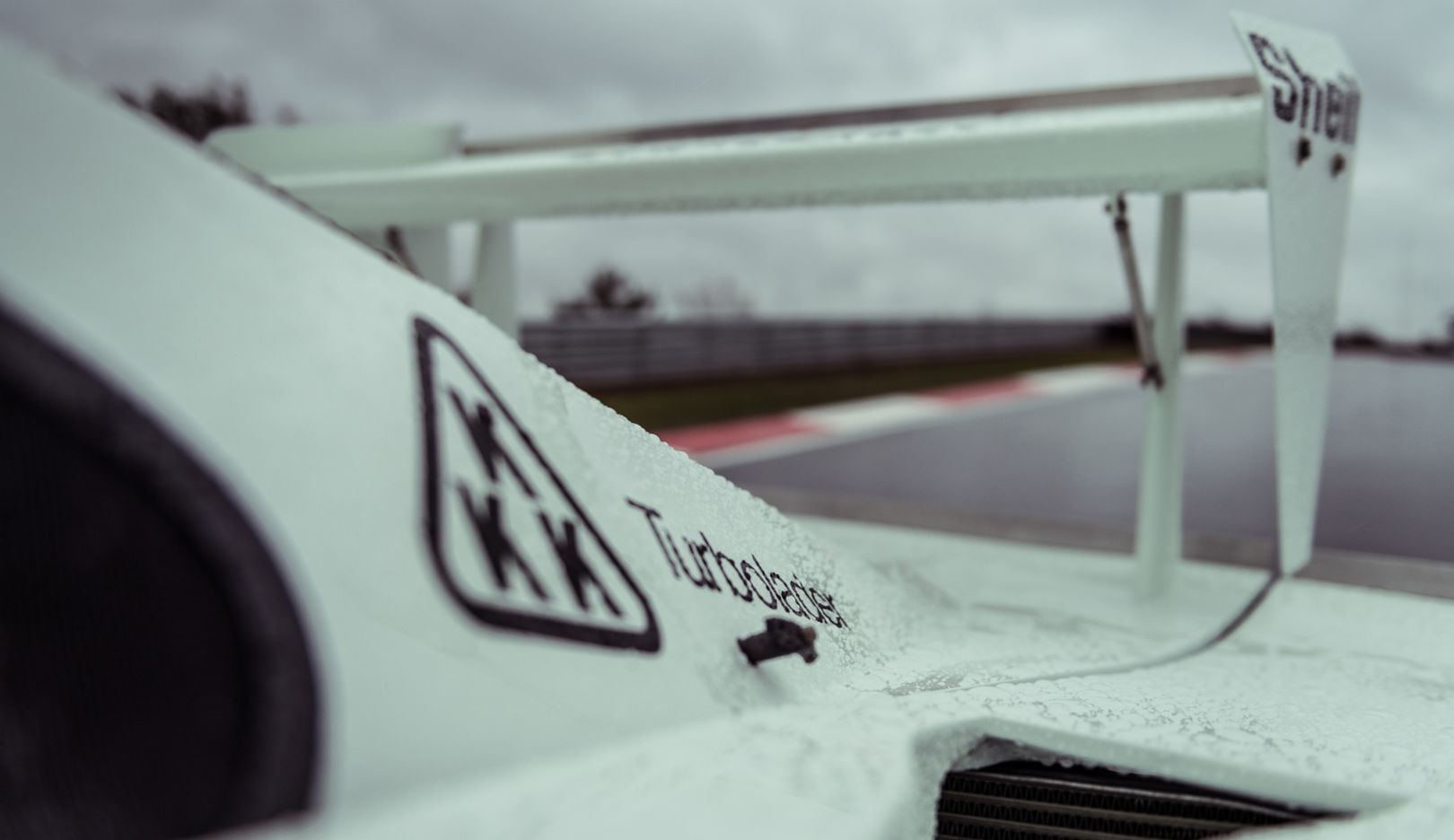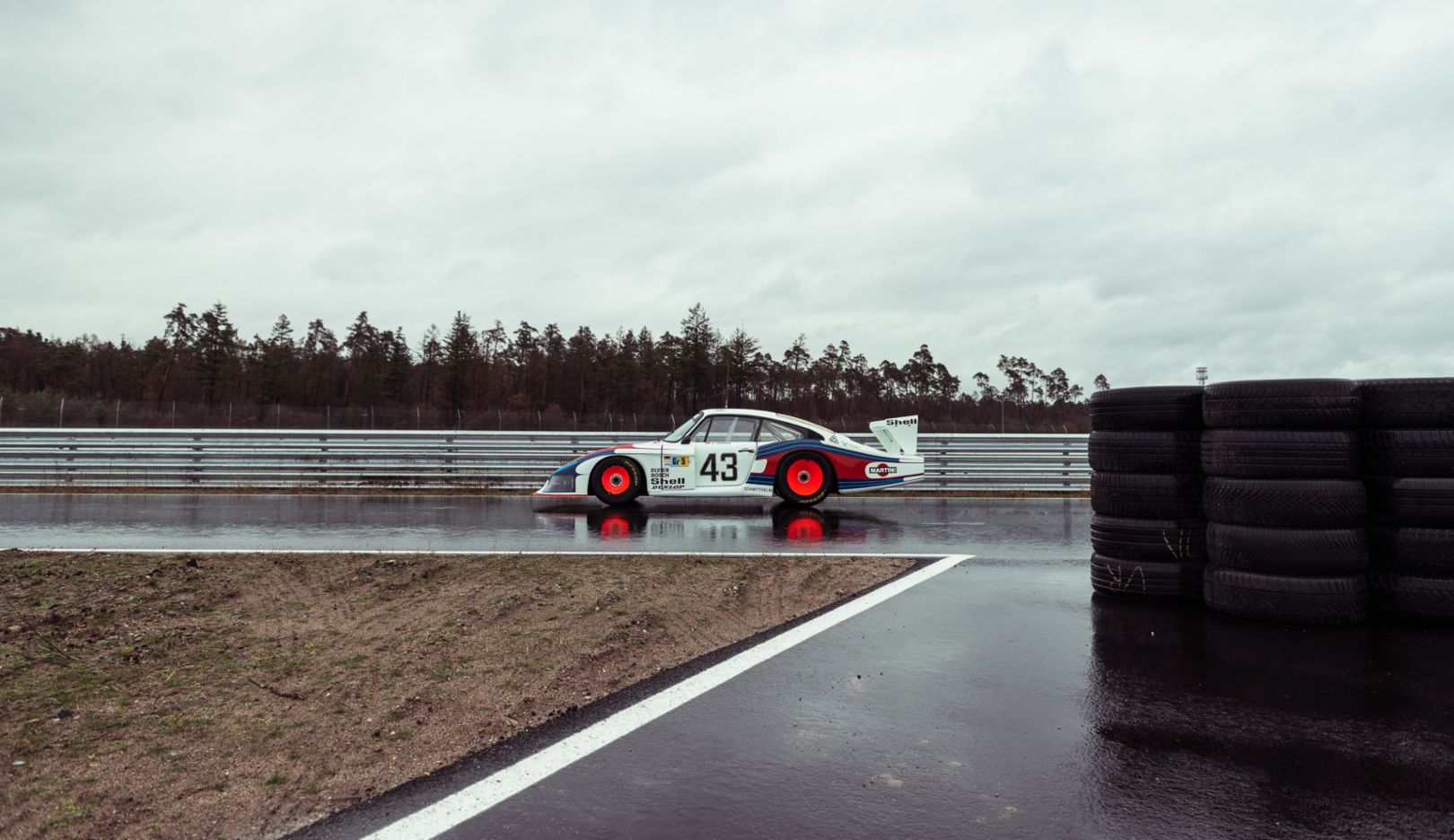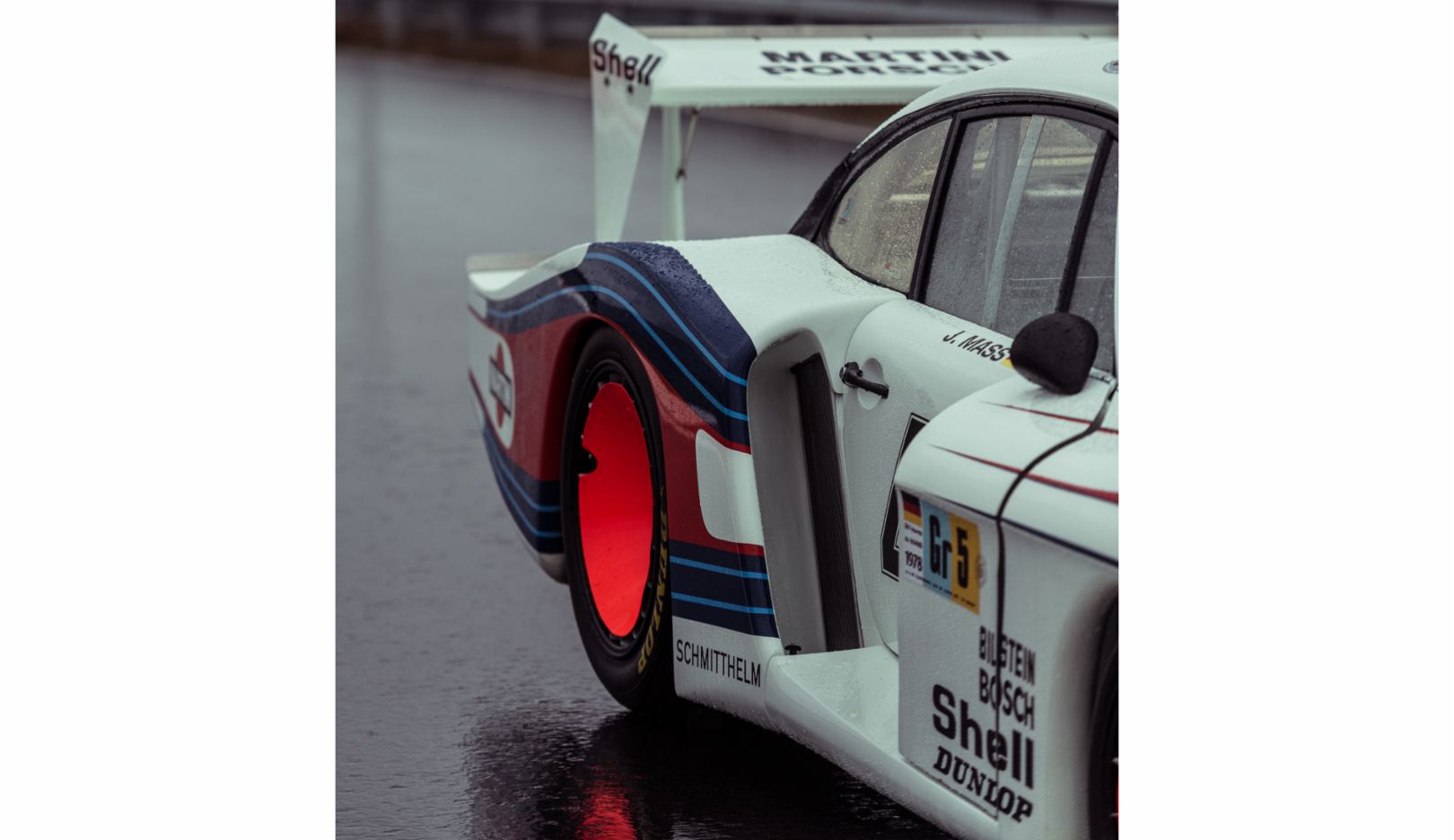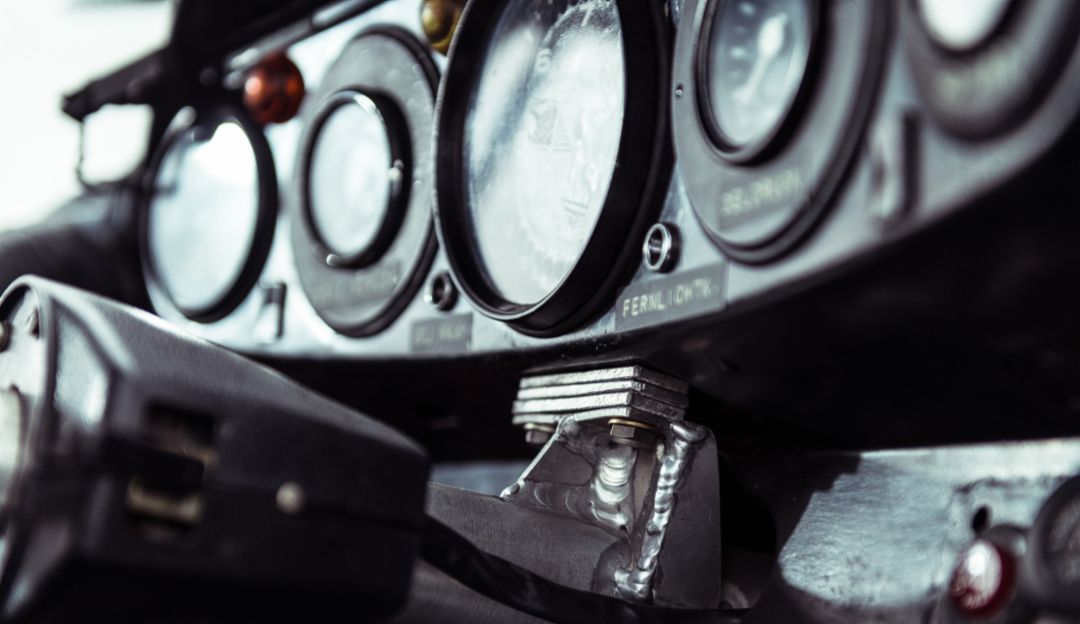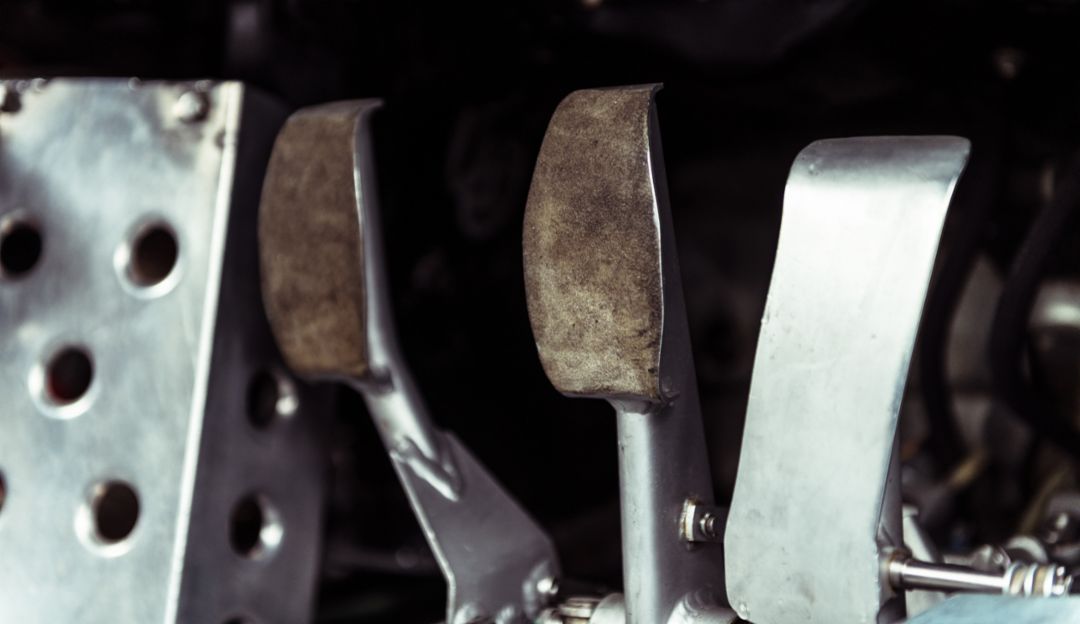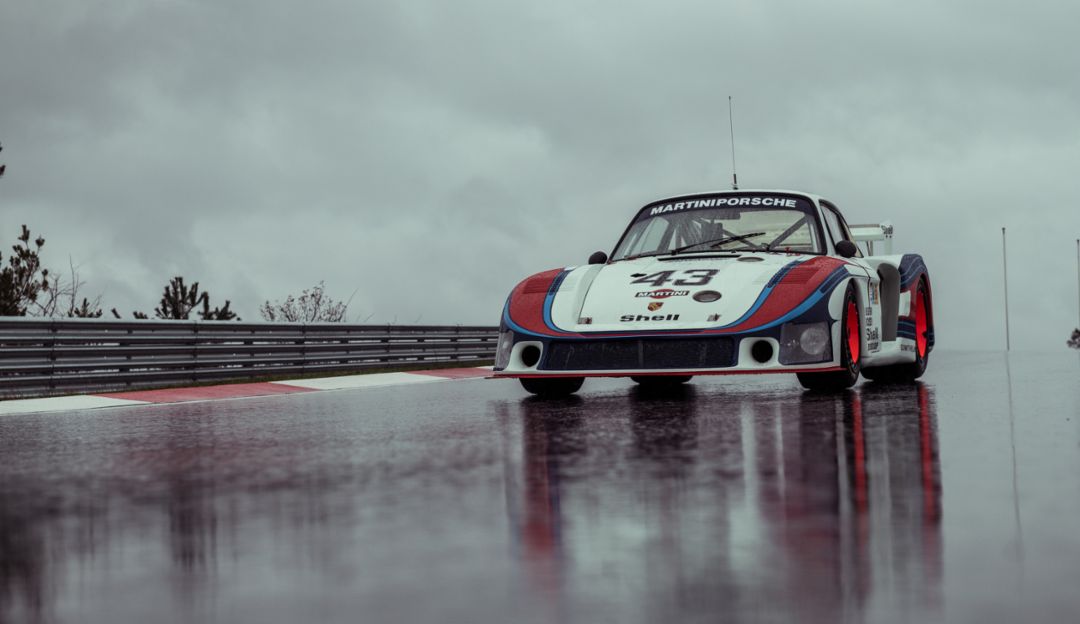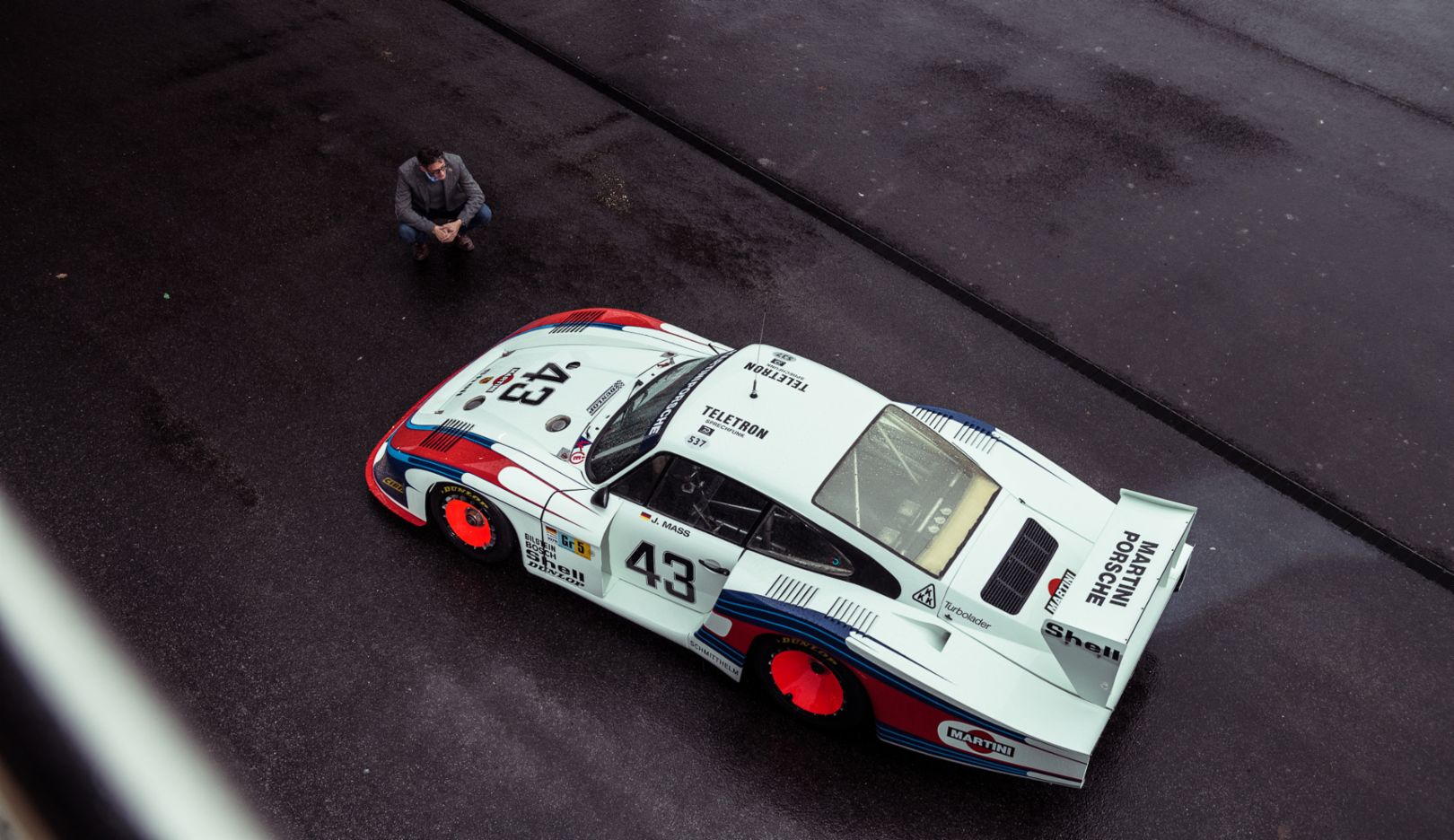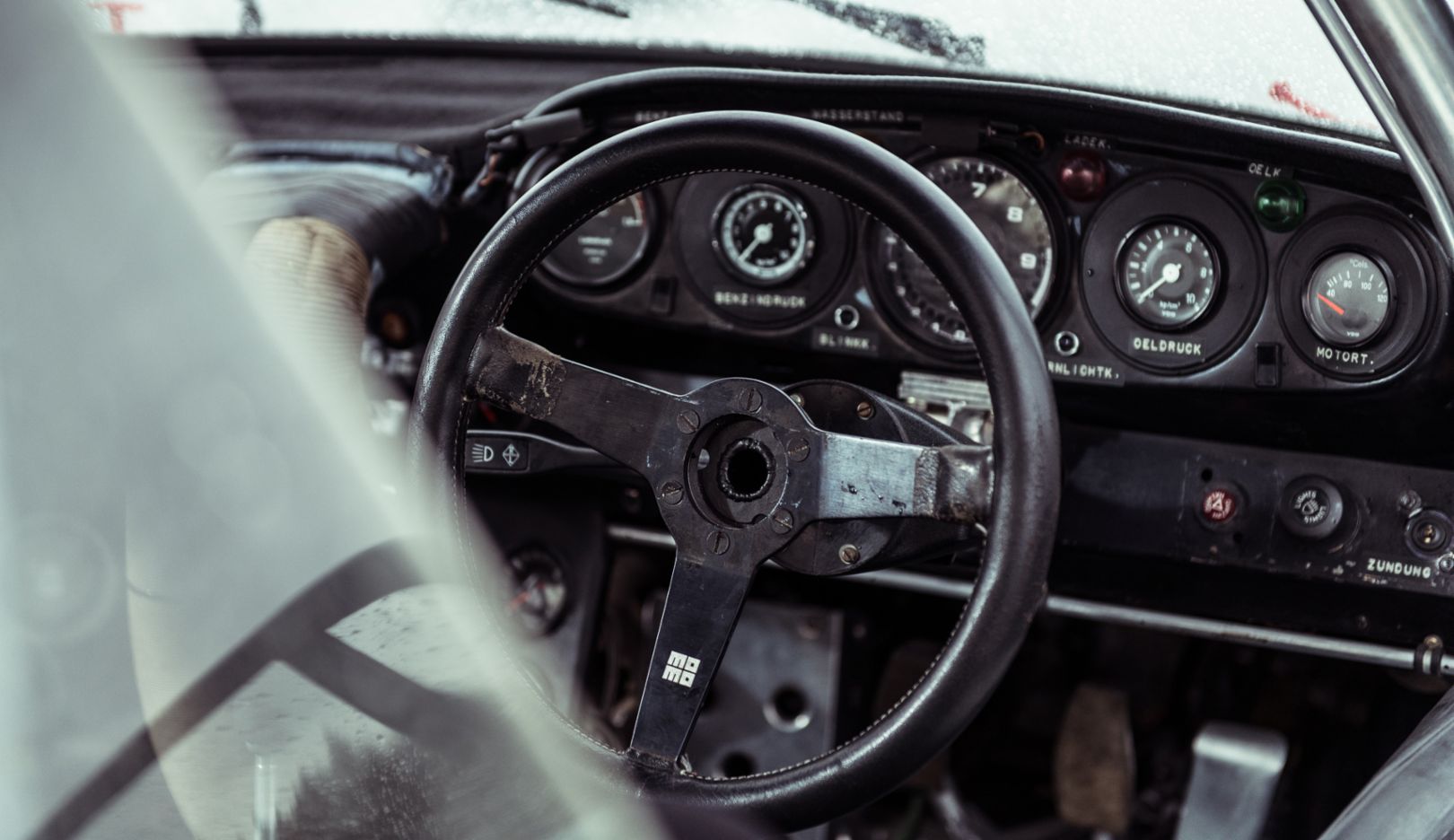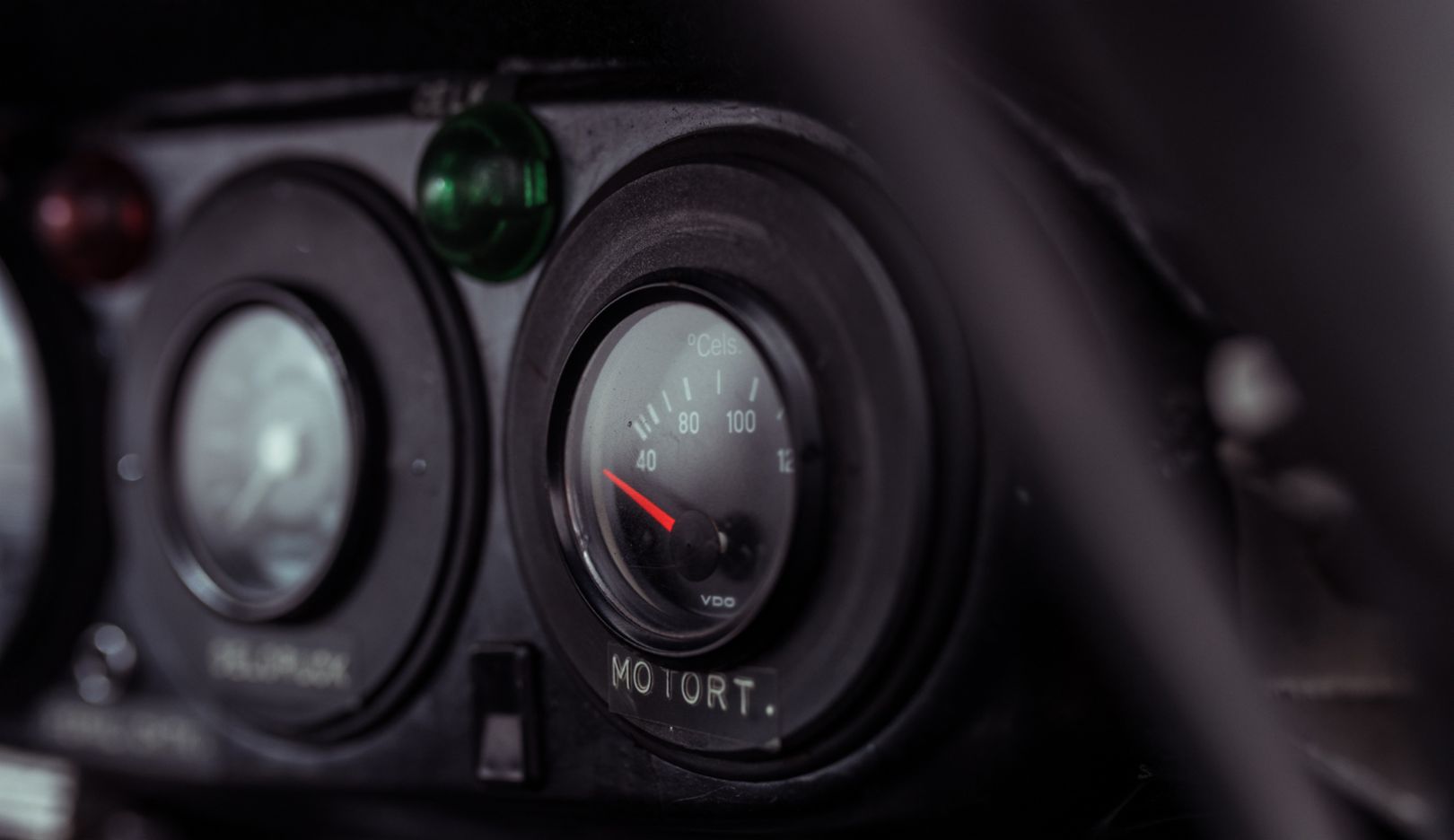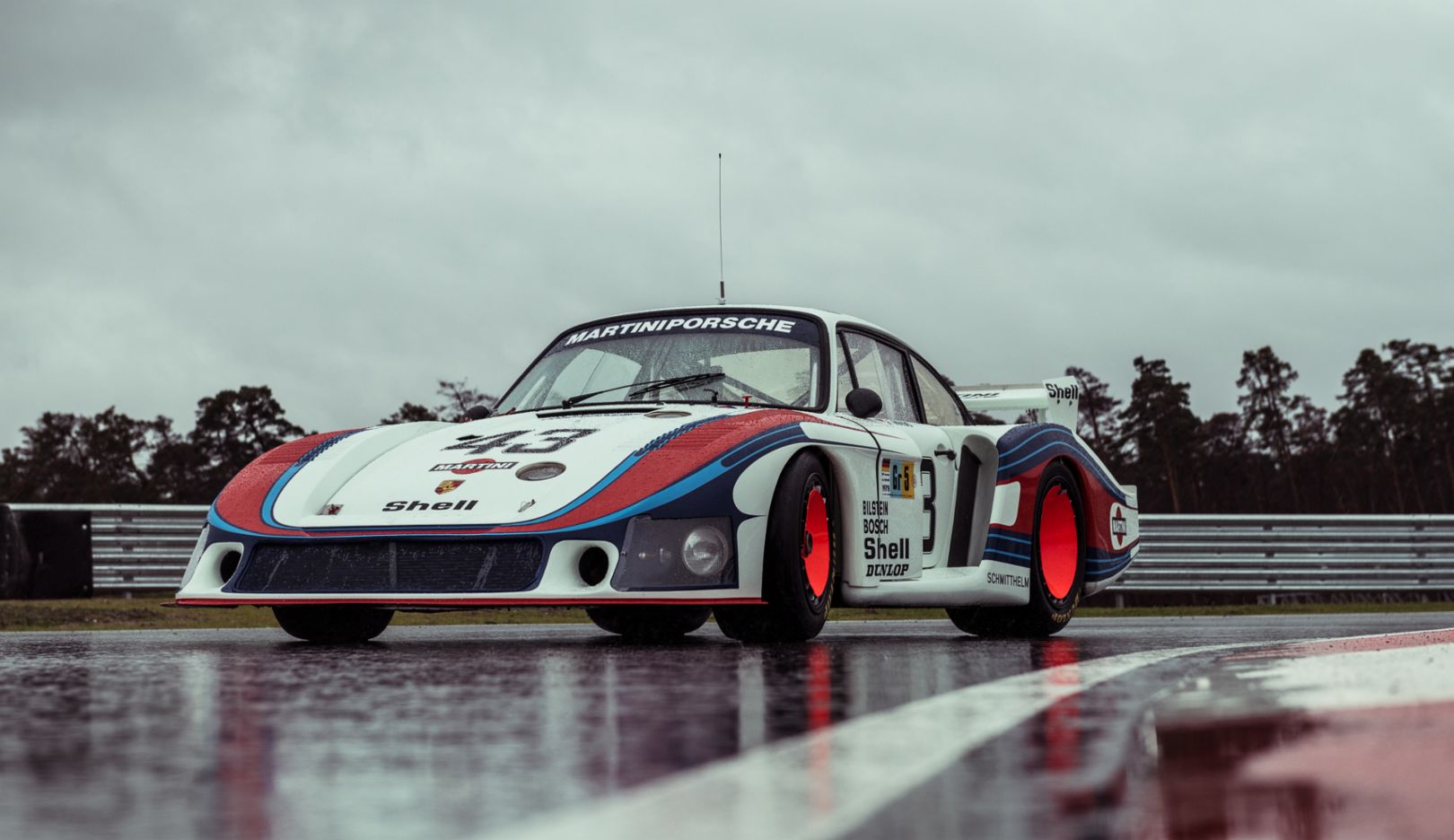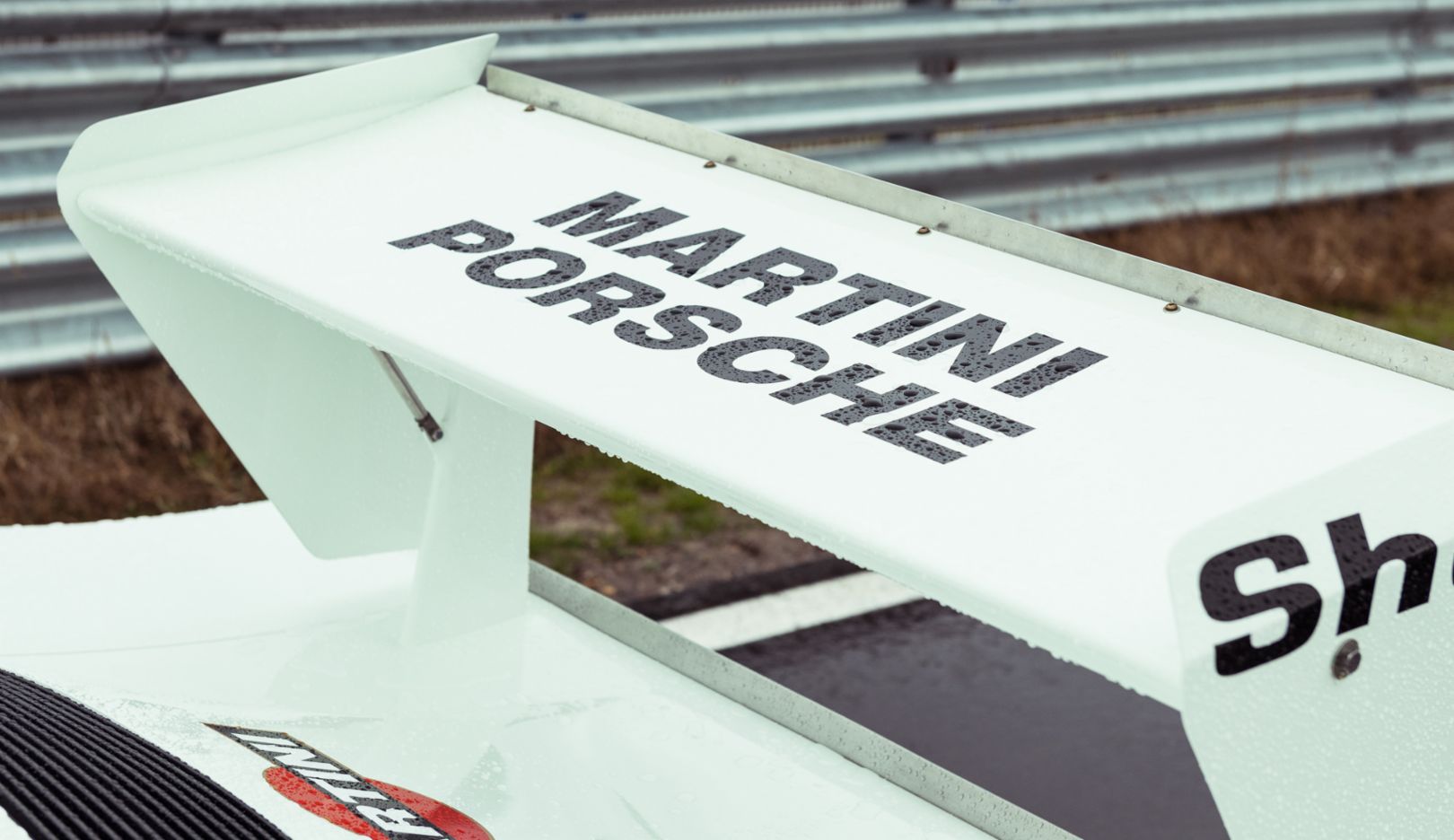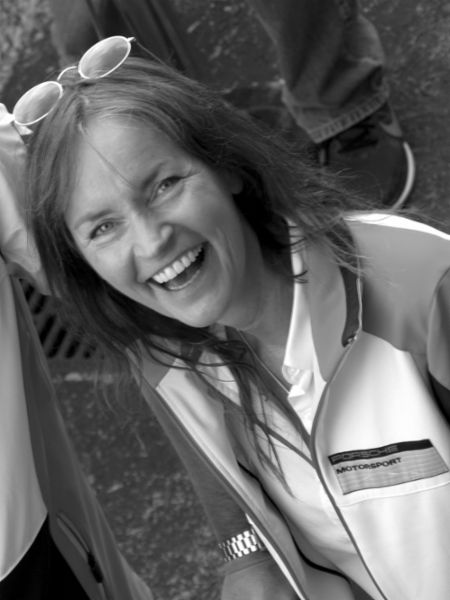Rendezvous in the Rain
Frank-Steffen Walliser lives and breathes Porsche. The Stuttgart native did his internship, graduate studies, and doctorate with Porsche. Before becoming head of the 911 and 718 model lines he was responsible for GT racing at Porsche. He meets “Moby Dick,” the turbo extremist in the 911 ranks.
Porsche 911 Turbo S models
Fuel consumption
City: 15.9–15.5 l/100 km
Highway: 8.6 l/100 km
Combined: 11.3–11.1 l/100 km
CO2 emissions combined: 257–254 g/km (as of 03/2020)
-
Interview with Frank-Steffen Walliser
Frank-Steffen Walliser:
“First and foremost, the new 911 Turbo is characterized by being a 911 Turbo and striking that balance between day-to-day usability and sportiness.
A bit tongue-in-cheek, I would say: The three technical highlights are the left turbocharger, the right turbocharger and the base engine. But altogether it’s certainly the advancements in the turbo technology, the integration of the PDK and the enhancement of the all-wheel drive.
I believe the most ambitious goal with this car was really the power boost. Getting those 70 hp in there – particularly with the very compact rear end.
Initially for me as an engineer, the Turbo is an intellectual thing but as a driver it’s all about instinct and emotion.
In the Porsche model lineup, the Turbo is always the top of the line and has made a name for itself. It all started with the 911 Turbo. It stands to reason that we would call all of our top models Turbo.”
“Feats of pioneering only emerge as such after some time.” Frank-Steffen Walliser
Mr. Walliser, do you miss the command post at the racetrack?
Absolutely. My decision to go into motorsports was driven by a passion that sticks with you. I still get excited by it. Racing is very immediate and produces clear, indisputable results. But I’ve also taken on my new role with a great deal of focus. It’s every bit as challenging, if not more so. And my motorsport experience—the focused work toward very concrete objectives—is extremely helpful in monitoring the results in development.
What’s your connection to the Porsche 935/78, better known as Moby Dick?
It’s the brawniest version of the 935 and at its core still a 911—to my mind, an eternally fascinating race car. When we developed the new 935, presented in 2018 as a Clubsport car, we first set up a table and benches around Moby Dick and just soaked it up. Literal benchmarking, if you will.
During the drive, we also approach Moby Dick in terms of content. In 1978 this Porsche 935 represented the most freewheeling rendition of the endless story of the 911 and started in just four races. Its 3.2-liter six-cylinder was the first Porsche engine with a water-cooled, four-valve cylinder head, while the cylinders themselves were air-cooled. Two smaller turbochargers offered more immediate throttle response than predecessors with a single, large turbocharger. For conventional races, the charge-air-cooled boxer generated up to 621 kW (845 hp); for the marathon in Le Mans, it had to make do with a stately 750 horses. No other 911 variant has ever achieved such engine output. Competing in the Group 5 class at the time, a 911-series body was stripped of everything that the rules would allow. The engineers added a tubular aluminum space frame, over which they stretched an aerodynamically optimized bodyshell. Weighing in at just 1,025 kilograms, the GT race car topped out at 366 kilometers per hour in its only Le Mans appearance in 1978.
Do you still remember your first turbo experience?
Very vividly, in fact: in 2000 I had the pleasure of driving a 996-generation 911 Turbo over the weekend. My wife and I drove to Hamburg. On our return to Stuttgart, we had a tight schedule but almost no traffic in the early morning hours. Covering about seven hundred kilometers in five and a half hours was a memorable experience and one that, for me, is inextricably tied to the awesome power behind the word turbo.
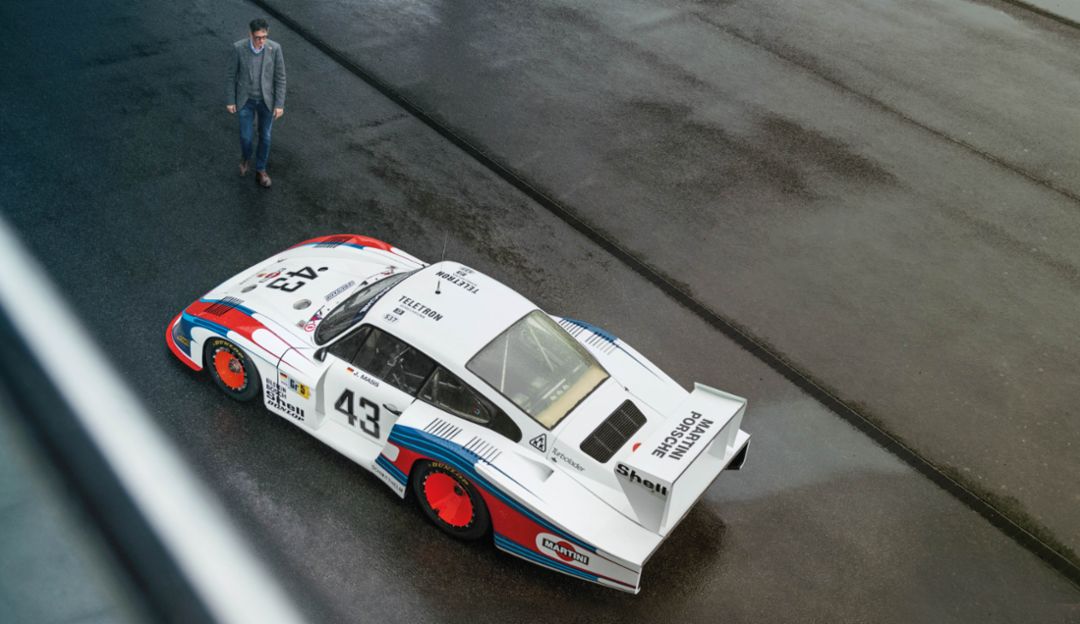
Brand identity:
Intern, graduate student, and doctoral candidate, overall project manager of the 918 Spyder, vice president of Porsche Motorsports—Frank-Steffen Walliser’s career at Porsche has been nothing less than turbocharged. And now the Stuttgart native is vice president of the 718 and 911 model lines.What does the word turbo mean to you—head, heart, or gut instinct?
As an engineer, I primarily see the thermodynamic component with its task of using the energy from the exhaust gas. That’s a matter of the head. But the result and experience are emotional, involving the heart and the gut. The 911 Turbo combines the experience of primeval forces, dominance, and technical prowess.
What has Porsche learned from cars like Moby Dick?
We’ve repeatedly developed groundbreaking technologies for motorsports that we’ve then managed to adapt for use in road cars. Of all the innovations, the turbocharger has been the most impressive example. Still considered exotic racing technology when it was introduced, it quickly established itself as the standard across a wide range. From racetrack to road—it’s true technology development at Porsche. Power, lower consumption, responsiveness: the turbocharger delivered what customers want. And the biggest takeaway from then still applies today: over 800 hp in a 911 is no problem. Its rear-engine design is the only concept in the world that offers optimal driving stability with so much thrust. The new Turbo with all-wheel drive pushes the 911 as a master of traction to a whole new level.
Having turbo and being a turbo—those are two different things at Porsche. Can you explain the nomenclature to us?
Today all new 911s, with the exception of the GT models, have turbochargers—as do almost all other Porsches. But not all of them carry this now practically indispensable technology in their names. At Porsche, turbo stands for the pinnacle, synonymous with the top model. Much like people think of Kleenex for facial tissues and Scotch tape for clear tape. That’s why this suffix also graces the top model of the exhaust-free Taycan.
With the new boxer engine with 3,745 cm3 and two VTG turbochargers, the new 911 Turbo S develops 478 kW (640 hp, Fuel consumption combined: 11.3–11.1 l/100 km, CO2 emissions combined: 257–254 g/km, (as of 03/2020))—70 hp more than its predecessor. Was this biggest power leap in recent Porsche history necessary?
Superior performance is a central, traditional, and emotional standard that has always been the calling card of the 911 Turbo. The 991 set a new standard. From that elevated starting point, only a substantial step up would make an impression. You have to really feel the increased power. And we succeeded in that.

Lifetime love affair:
When Porsche presented the first turbo in 1974, Frank-Steffen Walliser was just five years old. His favorite model car was the embodiment of the power of Porsche. The legendary Moby Dick became his turbo dream.What was the foremost development objective?
Day-to-day usability, for sure. This quality distinguishes the 911 Turbo from all other high-performance sports cars. There are also winter tires for it, making it an eminently controllable all-year car for the long haul. At the same time—and this was the second development goal—it has to render you speechless from time to time. With a bevy of new features—the optional sports suspension and sports exhaust system, for instance—we’ve given the turbo even better performance.
Character question: in which direction is the pendulum swinging with the new 911 Turbo—more toward Gran Turismo or indeed more toward an uncompromising sports machine?
For me, it’s always a bit more in the direction of a driving machine. But this question stays with you throughout the entire development process; it’s something of a continuous tightrope act. We hammer away at it in discussions, tests, and fine-tuning over a period of two to three years. What degree of sportiness do we want to give it, and how much day-to-day usability do we want to retain? What sound underscores its character and what noise level do we find unpleasant over longer distances? The clear positioning of the product in the end result is what distinguishes us. With the GT3, for example, the idea is “maximum sportiness with a bit of day-to-day usability.” With the turbo, high day-to-day usability is the technical program, its athletic road performance the free skate, so to speak.
What was the biggest challenge?
For the most part, it was precisely this balancing act. There was also the challenge of packing 640 hp into the relatively tight rear end and achieving stability under all conceivable conditions. The thermodynamics are complex. To boost the power, we used significantly larger turbochargers and had to reposition the corresponding charge-air coolers as a result.
On the autobahn, the view ahead is murky. Unceasing rain. A day in such a wet, gray haze was not on the agenda. And obviously not every road user handles the weather as confidently as Frank-Steffen Walliser. Signs mount of an impending traffic jam. Silence from the navi—the boss is in charge today.

Respect for the giants:
Captain Ahab’s pursuit of the sperm whale Moby Dick is famed around the world. The 935/78 was equally fearsome for race-car drivers.Would you rate the new 911 Turbo as having a pioneering role?
Feats of pioneering only emerge as such after some time. But I’m certain that our advancements in the areas of turbo technology, all-wheel drive, integration of the PDK transmission, and systems for even greater vehicle control will give the new turbo a shot at rising into the ranks of the pioneers. The top-of-the-line 911 Turbo has historically proven to be an icebreaker for the viability of new technologies in production cars and offered a glimpse into the future of the next 911 generation. I would list turbocharging with a bypass valve, the charge-air cooling, ceramic brakes, variable turbine geometry (VTG), adaptive aerodynamics, and all-wheel steering among them.
How did Porsche manage to master turbo lag?
In the beginning, that was entirely the driver’s responsibility. He had to estimate when to give it gas in a corner to get the delayed boost to accelerate out of the bend. The technical milestones were the wastegate control, charge-air cooling, turbocharger dimensioning, and VTG. Variable turbine geometry for generating better aspect ratios in the turbocharger in gasoline engines remains a distinguishing feature of Porsche and one of the secrets to achieving good drivability. Further major advancements result from the engine electronics and the PDK transmission. Carefully balanced between sportiness and comfort, the driving programs of the automatic dual-clutch transmission without traction interruption play a major role in the car’s agility and responsiveness.
What does the turbocharger technology in Moby Dick still have in common with that of the new 911 Turbo?
They are both, by definition, turbochargers, but that’s about it. The responsiveness of a current turbo is beyond comparison with the early versions. Moby Dick was harder to drive, a monster with rudimentary wastegate-controlled turbochargers. The performance of the new 911 Turbo, by contrast, is highly accessible.
The Hockenheimring at last. The model-line vice president leaves the comfort of the cockpit without hesitation and rushes toward his dripping wet old love. Moby Dick and Walliser are undeterred by inclement weather. Two racers that can take the punishment.

Porsche Experience Center Hockenheimring:
The seventh and newest of its kind. In Atlanta, Leipzig, Le Mans, Los Angeles, Silverstone, and Shanghai, Porsche offers its sporty customer base the opportunity to gain qualified experience.How does the new 911 Turbo sound?
Absolutely thrilling! As soon as you start it the first time, it’s clear that you’re sitting in a 911—the typical sound of the six-cylinder, which is particularly striking with the optional sports exhaust system. And we made a very deliberate decision to allow the turbochargers to hiss a bit and whistle every now and then.
Do the latest turbochargers in the 992 mainly boost power or reduce consumption?
Both simultaneously. The new 911 Turbo boasts an exceptional range of capabilities, which also underscores its day-to-day usability. But when you dial up the maximum power potential, the two turbochargers force huge amounts of air into the combustion chambers.
Is the new tire temperature gauge a gimmick from your former line of work?
Its parentage goes back to the racetrack, but it’s far more than just a gimmick. Together with other systems, it enhances drivability, driving pleasure, and above all, safety. Depending on the selected tires as well as their pressure and temperature, the critical contact area is generally barely larger than the size of a hand. Until now, we weren’t satisfied with the precision of tire temperature gauges, because they weren’t able to take account of certain events, such as wheelspin, and could not provide important information quickly enough. For the new 911 Turbo, we decided to break ground on a completely new approach. In addition to pressure measurement, we also model the tire temperature using software and can now display the temperature with extreme precision. It’s a real benefit. We’re talking about a high-performance sports car with tires to match. But if the tires are too cold, they can’t do what the driver expects them to. That’s relevant information. So we place great importance on having useful indications of tire pressure, wet condition sensors, and tire temperature.
Honestly, now: will there one day be an even more powerful Porsche 911 Turbo with a combustion engine?
When a new model is finished, you stand there with sweat on your brow and think: this is the max. But as engineers we’re always on the lookout and constantly discover fresh potential for improvement. This has enabled us to continue to redefine the limits of what’s possible over the decades. I see no reason why that should stop.
SideKICK: The 935 today
Under the direction of Frank-Steffen Walliser, an homage to the legendary Porsche 935/78 Moby Dick took shape in 2018. Conceived as a Clubsport race car, the new 935 was subject neither to the constraints of homologation nor to the need for street-legal approval—a rare degree of freedom for the engineers.

Based on the Porsche 911 GT2 RS, 991 generation, the new 935 features 515 kW (700 hp), an extended body, and numerous other design references to its famous predecessor of yore. Its birth was a gift to the sportiest fans of the brand to mark the anniversary of seventy years of Porsche sports cars. The limited run of seventy-seven units sold out immediately.
